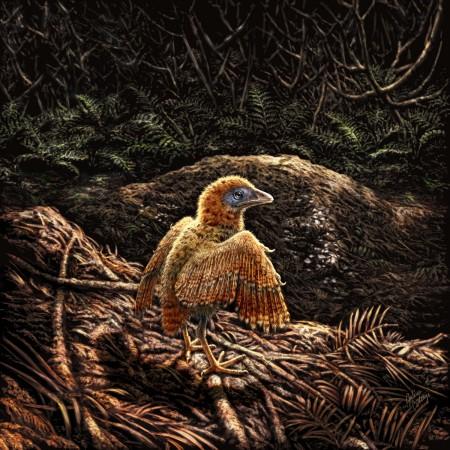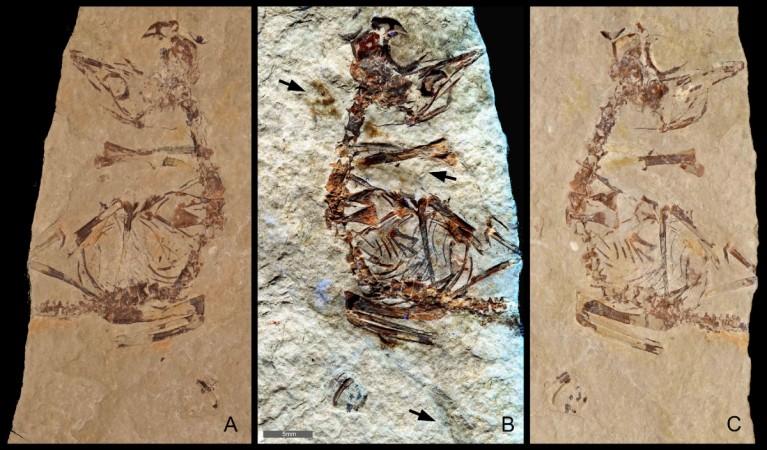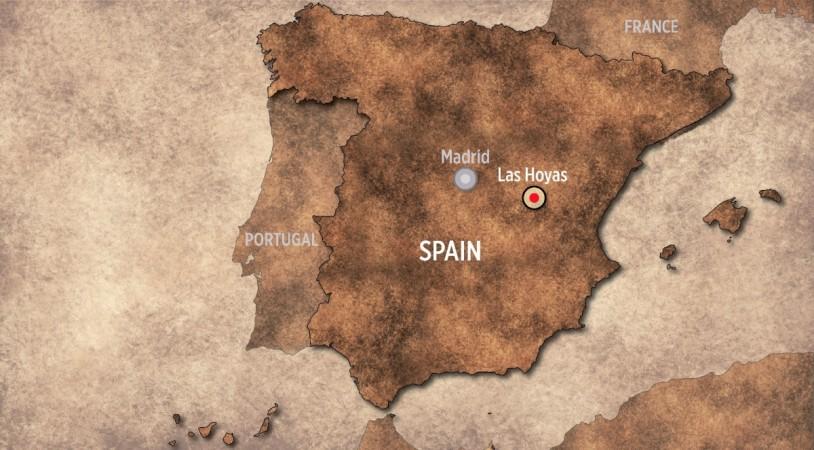
The ancient hatchling of birds like chickens and ducks came out of the egg running, according to latest fidnings from the 125 million-year-old Early Cretaceous fossil beds of Los Hoyas, Spain, which have long been known for producing thousands of petrified fish and reptiles.
The paleontologists found one special fossil -- a nearly complete skeleton of a hatchling bird -- that was unique and is one of the rarest of fossils. The lifestyle of this 3-cm long hatchling bird was studied by examining previously unknown feathering of the preserved fossil specimen.
"Previous studies searched for but failed to find any hints of feathers on the Los Hoyas hatchling. This meant that its original lifestyle was a mystery," says Michael Pittman from the University of Hong Kong who led the study along with Thomas G. Kaye from the Foundation for Scientific Advancement in the USA.

Within hours of hatching, chickens and ducks are up and running as they are "precocial" unlike pigeons and eagles which are "altricial". The latter require parental cover to keep themselves warm till they develop feathers. When precocial birds hatch, they have developed down feathers and partly developed large feathers and can keep warm themselves and get around without mum's help.
Previous attempts using UV lights failed to detect the feathers. Pittman and Kaye used a high power laser to study tiny chemical differences in the fossils in different colours, to make out previously unseen anatomical details. The new results on the hatchling bird revealed that they had feathers at birth and was thus precocial and out of the egg running.
The latest laser technology demonstrates that some early birds adopted a precocial breeding strategy just like modern birds, said researchers. Even during the time of dinosaurs, some enantiornithine bird babies had the means to avoid the dangers of Mesozoic life by following their parents or moving around themselves, they said.
"One of the feathers discovered was of a substantial size and preserves features seen in other hatchlings. It indicates that our hatchling had reasonably well-developed flight feathers at the time of birth", says Jesús Marugán-Lobón, another author of the study from the Universidad Autónoma of Madrid, Spain.


















